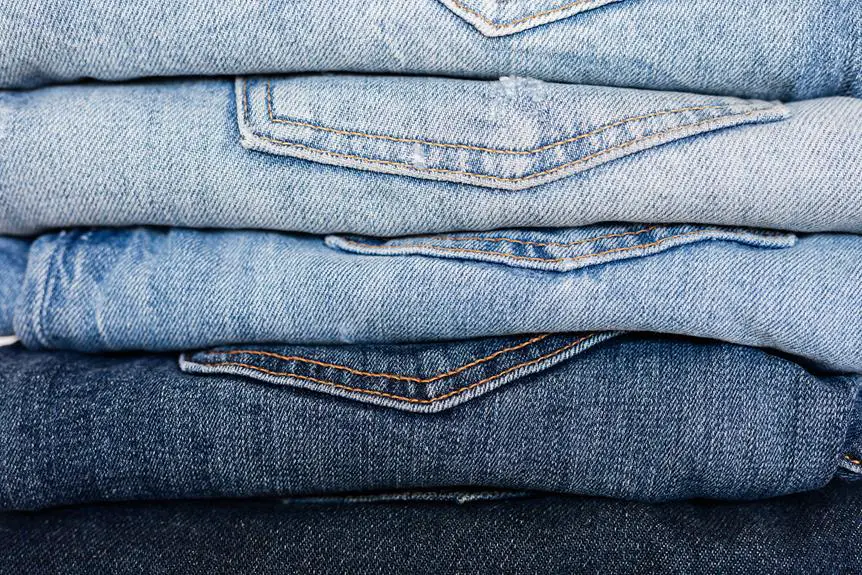Looking for the best fabrics for your shade systems? Understanding the key factors that determine fabric performance is crucial.
From UV protection and breathability to durability and water repellency, the right fabric can significantly impact the effectiveness and longevity of your shade system.
Consider factors like sunlight resistance, colorfastness, and maintenance requirements to ensure your shade fabric meets your specific needs.
With a mastery of these fabric characteristics, you can make informed decisions to enhance the functionality and aesthetic appeal of your shade systems.
Key Takeaways
- Prioritize UV protection and sunlight resistance for longevity and optimal sun protection
- Breathability and air circulation are important for comfort and functionality
- Choose fabrics that are durable and long-lasting
- Look for fabrics that are water repellent and mildew resistant
UV Protection and Sunlight Resistance
When selecting fabrics for shade systems, prioritize UV protection and sunlight resistance to ensure longevity and optimal sun protection. Fabric technology plays a crucial role in determining the level of UV protection and sunlight resistance a fabric can provide. High-quality shade fabrics are often treated with UV inhibitors during the manufacturing process to enhance their ability to block harmful UV rays effectively. Additionally, advancements in fabric technology have led to the development of specialized coatings and weaves that not only offer superior UV protection but also exhibit exceptional resistance to sunlight, preventing premature degradation and color fading.
Considering the environmental impact of the fabric is also important. Opt for fabrics that are manufactured using sustainable practices and materials. Some fabric options are made from recycled or eco-friendly materials, reducing the overall environmental footprint. Furthermore, choosing fabrics with long-term durability and resistance to sunlight can contribute to sustainability by reducing the frequency of replacements and minimizing waste.
Breathability and Air Circulation
To ensure optimal comfort and functionality in shade systems, you should prioritize breathability and air circulation, as they complement UV protection and sunlight resistance in providing a pleasant outdoor environment. Breathable fabrics allow air to pass through, preventing heat retention and promoting moisture management. This is crucial for creating a cool and comfortable space under the shade system, especially during hot and humid weather.
Fabrics with good air circulation properties ensure that the area underneath the shade remains well-ventilated, reducing the risk of stuffiness and discomfort.
When selecting fabrics for shade systems, consider materials that offer high breathability and efficient air circulation. Mesh fabrics, for example, are designed to allow air to flow through easily, preventing the buildup of heat and promoting a comfortable environment. Additionally, fabrics with moisture-wicking properties can help manage perspiration, further enhancing the overall comfort level.
Durability and Longevity
For optimal performance, prioritize fabrics with high durability and longevity when selecting materials for shade systems. Durability is crucial for withstanding harsh weather conditions, frequent use, and potential damage from outdoor elements. Look for fabrics that are resistant to tearing, fraying, and color fading to ensure a long-lasting shade system.
High-performance fabrics should also be able to maintain their structural integrity over time, without succumbing to wear and tear. Longevity is equally important, as it directly contributes to the sustainability of the shade system. Choosing fabrics with a proven track record of lasting for many years without significant deterioration will minimize the need for frequent replacements, reducing environmental impact and long-term costs.
Sustainability in shade systems involves selecting materials that can endure continuous exposure to sunlight, wind, rain, and other environmental factors. By prioritizing durability and longevity, you can ensure that your shade system remains effective and visually appealing for an extended period, making it a worthwhile and reliable investment.
Water Repellency and Mildew Resistance
You should prioritize fabrics that repel water and resist mildew when selecting materials for shade systems.
Water repellency is crucial for shade fabrics as it ensures that the material doesn't become waterlogged during rain or heavy dew, maintaining its effectiveness in providing shade. Look for fabrics treated with water-repellent coatings such as fluoropolymers or silicones, which create a protective barrier against moisture.
Additionally, mildew resistance is essential to prevent the growth of mold and mildew, which can cause discoloration and deterioration of the fabric. Fabrics with inherent resistance to mildew, as well as those treated with antimicrobial agents, are ideal for shade systems, especially in humid or damp environments.
When it comes to fabric maintenance, choosing materials with water repellency and mildew resistance can significantly reduce the need for frequent cleaning and upkeep. These properties help the fabric stay cleaner for longer periods and make it easier to clean when necessary.
Regular inspections for signs of wear and tear, along with prompt spot cleaning and proper storage during off-seasons, will further prolong the lifespan of shade fabrics.
Colorfastness and Aesthetic Appeal
Prioritizing fabrics with high colorfastness and appealing aesthetics is essential for creating an attractive and long-lasting shade system. When considering the colorfastness and aesthetic appeal of fabrics for shade systems, there are several key factors to take into account:
- Colorfastness: Look for fabrics that are UV-resistant and fade-resistant to ensure that the colors remain vibrant and true for an extended period. This will help maintain the visual appeal of your shade system over time, even when exposed to the elements.
- Fabric Texture: Consider the texture of the fabric, as it can greatly impact the overall aesthetic of the shade system. Smooth, sleek textures may provide a modern and sophisticated look, while textured or woven fabrics can add depth and visual interest to the design.
- Aesthetic Appeal and Pattern Selection: Choose fabrics with patterns and colors that complement the surrounding environment and the intended design aesthetic. Whether you're aiming for a contemporary, traditional, or natural look, selecting the right patterns and colors can enhance the overall appeal of the shade system.
Maintenance and Cleaning Considerations
When it comes to maintaining shade system fabrics, it's important to consider the fabric's lifespan and care requirements. Understanding the recommended cleaning frequency for different fabric types is crucial in preserving their longevity and appearance.
Proper maintenance and cleaning not only extend the life of the fabric but also ensure that your shade system continues to provide effective protection.
Fabric Lifespan and Care
When considering fabric lifespan and care for shade systems, it's important to regularly clean and maintain the fabric to prolong its durability and functionality. To effectively manage the lifespan of shade system fabrics, follow these maintenance and cleaning considerations:
- Regular Cleaning: Utilize a gentle cleaning solution and a soft brush to remove dirt and debris from the fabric surface.
- Avoid Harsh Chemicals: Refrain from using harsh chemicals, bleach, or abrasive cleaners, as they can damage the fabric's fibers and coatings.
- Proper Storage: When not in use, ensure the fabric is completely dry and properly stored to prevent mold, mildew, and premature wear.
Cleaning Frequency Recommendations
To maintain the durability and cleanliness of your shade system fabric, regularly clean it using a gentle cleaning solution and a soft brush. For routine maintenance, gently remove any debris or dirt from the fabric with a soft brush or cloth.
If stains occur, promptly spot clean the affected area using a mild soap solution and lukewarm water. Avoid using harsh chemicals or abrasive cleaners, as they can damage the fabric's protective coating.
After cleaning, allow the fabric to air dry completely before retracting the shade system. Regular maintenance not only preserves the aesthetic appeal of the fabric but also extends its lifespan by preventing the accumulation of dirt and debris, which can degrade the fabric over time.
Frequently Asked Questions
Can These Fabrics Be Easily Customized for Specific Shade System Designs and Sizes?
Customization options for shade system fabrics offer design flexibility to suit your specific needs. Fabric durability ensures long-lasting performance, while minimal maintenance requirements make upkeep a breeze. You can easily tailor fabrics to your desired sizes and designs.
Are There Any Specific Installation Requirements or Considerations for These Fabrics?
Consider installation requirements for shade system fabrics, ensuring proper tensioning and support. Fabric durability influences long-term performance, while customization options and design flexibility impact suitability for specific installations. These factors contribute to overall system effectiveness.
What Are the Environmental Impacts of Using These Fabrics for Shade Systems?
Using certain fabrics for shade systems can have environmental impacts. Sustainable alternatives like recycled or organic fabrics can minimize these effects. Ensure you're considering the long-term benefits and drawbacks when choosing materials.
How Do These Fabrics Perform in Extreme Weather Conditions Such as High Winds or Heavy Rain?
In extreme weather conditions, performance of shade system fabrics is crucial. Look for durability in high winds and heavy rain. Consider maintenance requirements to ensure longevity and functionality. Proper care can extend fabric lifespan.
Are There Any Special Considerations for Using These Fabrics in Commercial or Public Spaces?
When using these fabrics in commercial or public spaces, you'll find that customization options allow you to tailor the shade system to your specific needs. Their durability in public spaces makes them ideal for long-term use.
- How Does Ring Spun Cotton Affect Garment Fit and Shape Retention? - August 13, 2024
- What Are the Challenges in Producing Ring Spun Cotton? - August 13, 2024
- Is Ring Spun Cotton Suitable for Plus-Size Clothing? - August 13, 2024




